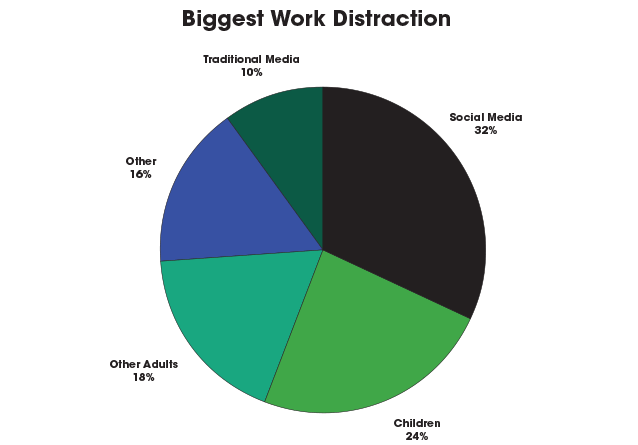
Motivating Your Remote Workforce While Maintaining Compliance
By Elizabeth Keifer Herron, VP Solutions and Sales, Collegiate Admission and Retention Solutions (CARS)
Background
When the coronavirus made landfall in the United States earlier this year, no one could have predicted the magnitude of its destructive wake. Let’s look at the impact COVID-19 has had on the U.S.:
- >2.8 million documented cases and >129,000 deaths, as of July 7 (https://www.cdc.gov/coronavirus/2019-ncov/cases-updates/cases-in-us.html)
- >14% of the U.S. non-farm labor force was unemployed in May (https://www.bls.gov/news.release/pdf/empsit.pdf)
- >33 million unemployment claims have been filed (https://www.washingtonpost.com/opinions/2020/05/11/how-avert-another-foreclosure-crisis-covid-19-economic-fallout/)
- Federal budget deficit will hit $3.7 trillion this year as compared with $1 trillion in 2019 (https://www.cnn.com/2020/05/06/business/us-debt-deficit-coronavirus/index.html)
The COVID-19 pandemic has created instability and insecurity the likes of which have not been seen in the U.S. since the Great Depression. Motivating and supporting institutional staff so that they can help students succeed is trickier than ever.
According to a recent article “How to Keep Your Team Motivated, Remotely,” in the Harvard Business Review, “remote workers are less productive than on-site workers, and they are less likely to be productive if they have no choice as it relates to where they work.” When the government mandated conversion to a completely remote workforce due to “stay at home orders,” we were catapulted into this reality.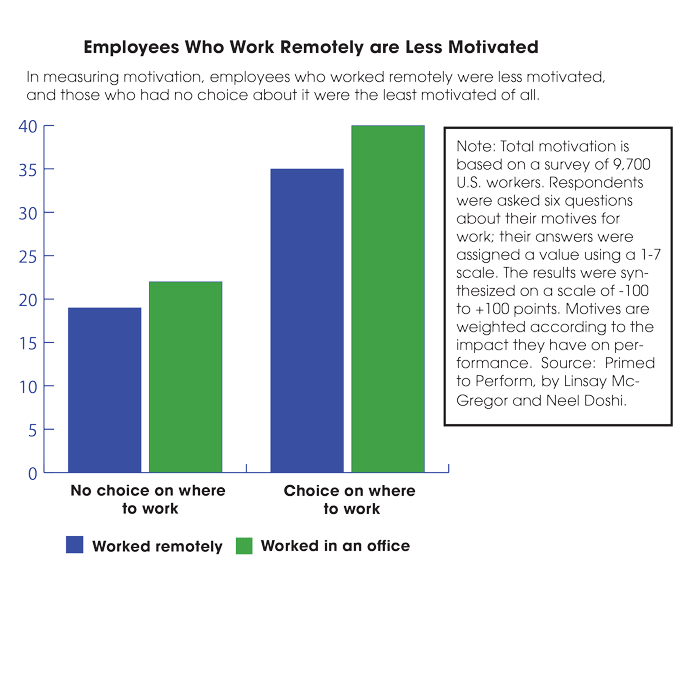 Source: https://hbr.org/2020/04/how-to-keep-your-team-motivated-remotely
Source: https://hbr.org/2020/04/how-to-keep-your-team-motivated-remotely
Even with phased re-opening, many institutions must continue to support some form of remote or blended workforce to comply with social distancing requirements and to support individuals for whom a return to on-site work is not possible. Further, some states are scaling back their re-opening schedules due to a recent surge in new cases. Although the new infection rates hit a low of 13,284 on May 6, new U.S. COVID-19 cases exceeded 44,000 two days in a row on June 26 and 27, the highest since cases have been tracked.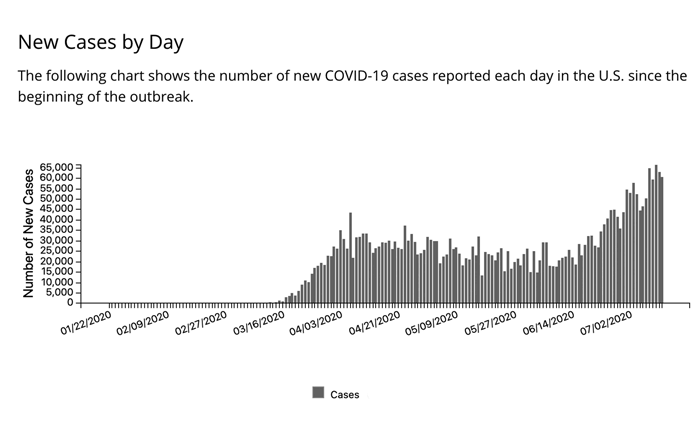
Source: https://www.cdc.gov/coronavirus/2019-ncov/cases-updates/cases-in-us.html
Most institutions worked out the technical requirements to support their remote workforce, including tools and technology to perform their duties remotely, guidance for creating their home “office,” and necessary training to stay connected to their team. Further, they refined access to confidential information and ways to keep staff connected using video conferencing, perhaps even deploying remote monitoring and coaching.
However, as different communities and states reopen, institutions evaluate how to bring staff and students back to campus, while staying in compliance with capacity restrictions and local or regional guidance for social distancing and other protective measures. For most institutions, this translates into some portion of their team working remotely for the foreseeable future.
What factors contribute to the loss of motivation?
Due to COVID-19, many institutions experienced reductions in staff due to health-related issues, furloughs or other situations. This reduction results in the remaining team members performing other duties and wearing multiple hats. This stress, when added to economic uncertainty and a general sense of fear, can impact motivation. A recent report, “The Real Productivity Impact of Remote Work,” by Valoir reveals some common key areas of concern felt by remote workers.
This chart in the Valoir report shows, “Job-related worries were the top concern for one-third of workers, higher than concerns about illness.”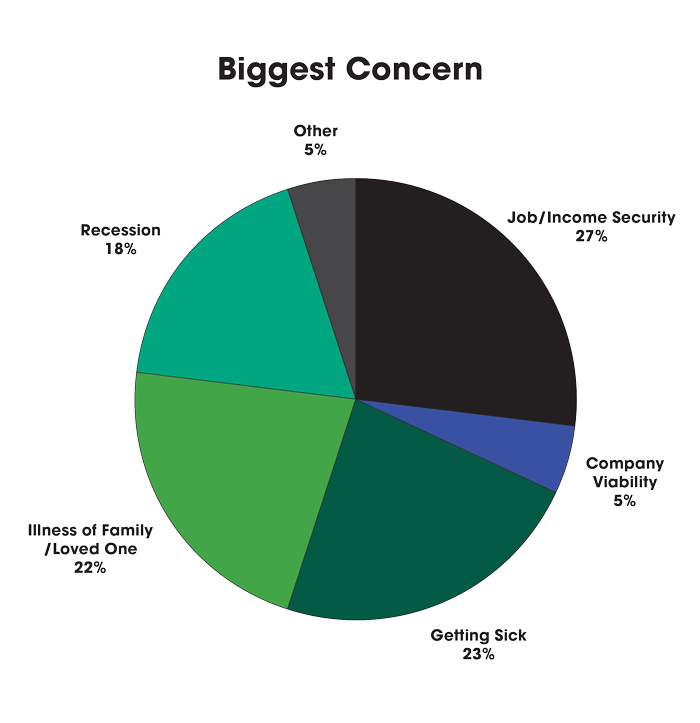
Another de-motivator for performance when staff is working remotely is the loss of connection between team members and to the purpose or meaning for their work. Humans are innately social beings, and the workplace provides an outlet for interaction with others who share a common goal. Post-secondary institutions exist to provide education and training to their students, helping them to realize their goals and dreams. Without the physical connection to the institution, other team members and students, the purpose may feel less tangible. The loss of connection to purpose and diminished access to comradery compound the loss of motivation felt by remote workers.
The logistics of working remotely present challenges for people as well. Many individuals do not have a dedicated space for their “home” workstations and are juggling household duties and possibly the interference of children or other family members also working in the home. In addition, staff must take extra precautions as they attempt to manage their time in compliance with their work schedules and to protect personally identifiable information as they work remotely. This chart from the Valoir report depicts the most common forms of distractions affecting productivity for remote workers, with social media ranking the highest.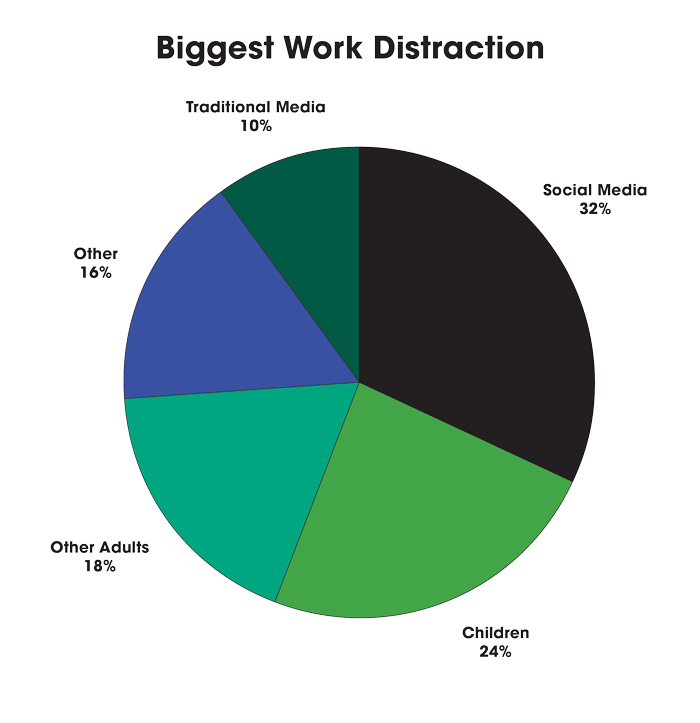
The combination of these external and internal factors requires additional support for team members to encourage them and assure motivation and compliance.
How can we support and motivate our remote workers?
Stay at home orders stripped many workers of the right to choose where they work or where they are most productive. Individuals with “essential” positions were forced to continue working on-site, despite anxiety or concern about their health, while others were required to stay at home, regardless of their comfort in converting to remote work. Change is difficult, but the complete loss of control makes it harder. The Harvard Business Review study cited earlier found that motivation is at its lowest for remote workers who did not choose to work remotely.
Communication is the key
Goal setting and evaluation – Managers must communicate goals and performance standards with more clarity than they ordinarily would in the office, since they have less opportunity to observe and intervene. Likewise, frequent performance reviews are necessary and may be needed on a weekly basis rather than quarterly or annual reviews. People thrive when they realize they are meeting or exceeding expectations, and recognition of success is a tremendous motivator.
If team members are working with prospective or current students by telephone, consider live monitoring calls or recording calls to provide quality assurance checks and coaching and counseling of team members. Engaging with timely and regular feedback is more critical than ever with team members working remotely, and lets them know you care.
Bring teams together virtually – Hold weekly virtual “face-to-face” meetings with teams to review progress, brainstorm on solutions to problems, celebrate success and have fun. Workers who understand the purpose and value of their creativity and input will be more motivated toward the common goal of student success. Consider a monthly virtual party or happy hour with a theme (share your pet, favorite recipe, crazy hair day, etc.) so the play aspect of work is not lost due to social distance or blended working conditions.
Flexibility and innovation – The changes brought on by COVID-19 are new for everyone and learning while doing is the new “normal.” Task all members of your organization to become involved with suggestions or adaptations to the new paradigm. With a few months of experience in the books, now is a great time to evaluate how things are going for your institution, your staff and your students, and to get everyone strategizing on new ways of doing things.
- What is working well and could be expanded?
- Which aspects of our conversion are not working well that could be changed?
- How feasible is it to continue with this trajectory?
- Which team members are the most comfortable returning to work, working at home or being flexible with either, and how can we support their needs and strengths?
- What is our single greatest success from the past 90 days and our single greatest failure, and how can we learn from these?
- How are the changes in our state going to have an impact on our short-term and long-term educational model?
- Which metrics to evaluate our success require modification?
Compliance is critical
Coronavirus Aid, Relief, and Economic Security Act (CARES Act) – Compliance with the myriad of higher education laws and regulations, accreditation standards and state requirements is complicated enough, but now institutions have Higher Education Emergency Relief Fund (HEERF) compliance to consider as well. Congress swiftly passed the CARES Act to provide support to families, businesses, students and postsecondary institutions, but the aid comes with requirements for notification and management. HEERF required public disclosure by institutions within 30 days of receipt on the amount of funding they received and how the funding would be allocated, requiring at least 50% go directly to students. Although the Department of Education has been slowly providing guidance to institutions regarding compliance, institutions are still held accountable to the law, with or without specific guidance. (https://www2.ed.gov/about/offices/list/ope/caresact.html)
Cybersecurity – The Department of Education has increased its focus on cybersecurity, adding new review provisions to the audit guides. With so many team members working remotely, it is more important than ever to refine training, policies and procedures related to the security of protected data, including penetration testing. Further, the number of “phishing” campaigns or virus attempts is on the increase worldwide, so team members should be trained and updated regularly with regard to known or potential threats.
Wage and hour – It is critical to carefully monitor the work schedules of your remote and blended team members to ensure compliance with wage and hour regulations. Most of us find that we are able to work more or may find it easier to work a different schedule when working remotely, as we do not have a commute. Be certain that your non-exempt employees are working and tracking their time, and that overtime pay is awarded for hours in excess of 40.
Misrepresentation – While all institutions have careful guidance and scripting for team members to prevent incidences of misrepresentation, it will be harder to monitor compliance with a remote or blended workforce. In addition, utilization of video conferencing or other tools, including the increased use of chat, may result in more ad-hoc comments or conversations than wouldn’t normally take place on campus. Make certain to provide additional guidance and training to your team and use role-play using the technology platform to increase comfort and promote compliance. In addition, make certain that whatever information or tools are shared with students and prospective students are those that have already been approved for use and convert them to the appropriate medium for virtual use.
State-by-state guidance on COVID-19 – This large moving target presents many challenges for institutions in supporting your workforce and your students. Do not fall prey to second-hand information as it relates to the status of your community, state or region with regard to COVID-19 compliance. Refer to government websites, guidance and information to help you determine your opening or expansion of your opening, appropriate capacity and screening and increased sanitation protocols.
Although challenging, this new landscape is no longer completely unfamiliar. While some of the water is still uncharted, we have plotted a course for student success by supporting and motivating faculty and staff. Communicate with other leaders in the higher education community and share ideas. Career Education Review recently featured interviews on phased re-opening, and there are more than 50 professional sessions available through the CECU Virtual Convention website. Finally, CARS has created a variety of free webinars to assist you on your journey — http://collegiatersvp.com/resources/.
ELIZABETH is a senior member of the executive management team at CARS. Her multiple responsibilities include oversight and management of CARS’ placement verification service, client support, community outreach, as well as chief compliance specialist. Serving on numerous higher education associations’ committees, she is a respected and frequent presenter at many industry workshops and conferences. Calling Washington, DC her home enables Elizabeth to access up-to-the-minute information on a variety of legislative and regulatory issues affecting the post-secondary community. A founding member of the CARS’ family of companies, Elizabeth received her BA with honors in Political Science and Economics from Douglass College of Rutgers University and her prior experience includes chief lobbyist for the Career College Association (now CECU).
Contact Information: Elizabeth Keifer Herron // Vice President – Solutions & Sales // Collegiate Admission and Retention Solutions (CARS) // 202-558-2337 // ekherron@collegiatersvp.com // www.collegiatersvp.com // https://www.linkedin.com/in/elizabeth-herron-446595/











